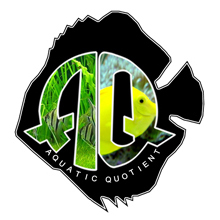Hello all,
I've set up my tank around 3 months ago.
I got away with little to no algae but the last few weeks I'm struggling a bit with staghorn.
I think co2 is not a problem. Lime green to yellow and circular flow.
Could it be lack of nutrients? I only dose 4ml of TNC complete per day and change 35% water a week.
Interestingly staghorn algae grows everywhere, on driftwood, tall stem plants, carpeting plants. Background, foreground, low flow and high flow areas.
I mechanically removed all visible algae last thursday and it's reappeared worse than before already.
Hydrogen peroxide and excel work on driftwood but melt the moss and monte carlo so I avoid using them.
The tank:
Fluval Roma 200L
Chihiros wrgb 2 slim at maximum
Flow rate around 3000lph (fluval 307 and hydor koralia wavemaker)
Co2 using bazooka diffuser
Tropica soil with tropica substrate
Relatively high bioload: 8 otos, 5 honey gourami, 10 juvenile albino cories, 16 rummynose tetras and around 30-40 shrimps (amano, cherries, crystal)
Should I increase the amount of fertiliser? Adjust the flow or CO2?

I've set up my tank around 3 months ago.
I got away with little to no algae but the last few weeks I'm struggling a bit with staghorn.
I think co2 is not a problem. Lime green to yellow and circular flow.
Could it be lack of nutrients? I only dose 4ml of TNC complete per day and change 35% water a week.
Interestingly staghorn algae grows everywhere, on driftwood, tall stem plants, carpeting plants. Background, foreground, low flow and high flow areas.
I mechanically removed all visible algae last thursday and it's reappeared worse than before already.
Hydrogen peroxide and excel work on driftwood but melt the moss and monte carlo so I avoid using them.
The tank:
Fluval Roma 200L
Chihiros wrgb 2 slim at maximum
Flow rate around 3000lph (fluval 307 and hydor koralia wavemaker)
Co2 using bazooka diffuser
Tropica soil with tropica substrate
Relatively high bioload: 8 otos, 5 honey gourami, 10 juvenile albino cories, 16 rummynose tetras and around 30-40 shrimps (amano, cherries, crystal)
Should I increase the amount of fertiliser? Adjust the flow or CO2?









